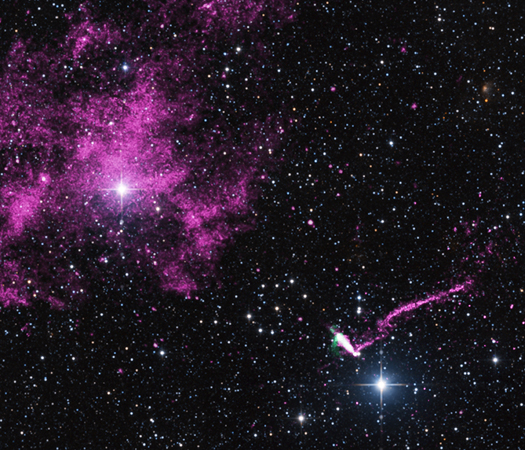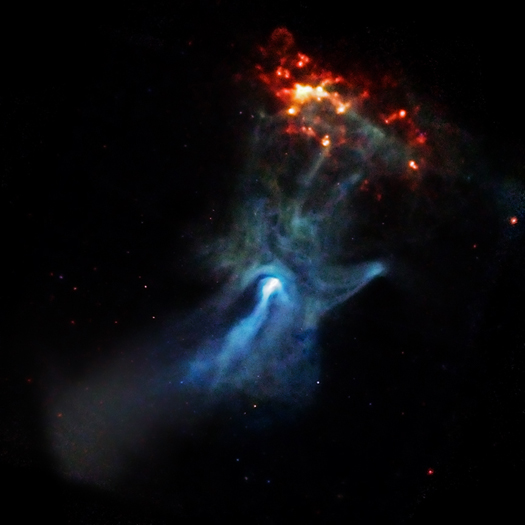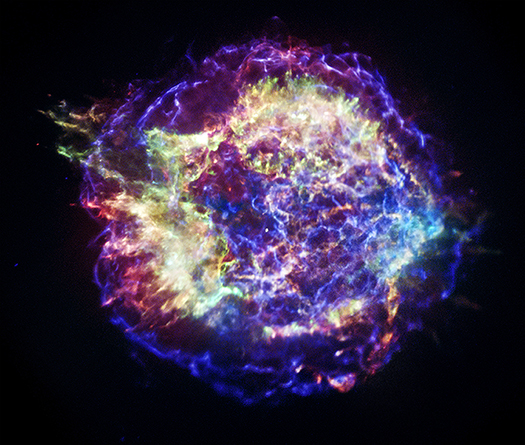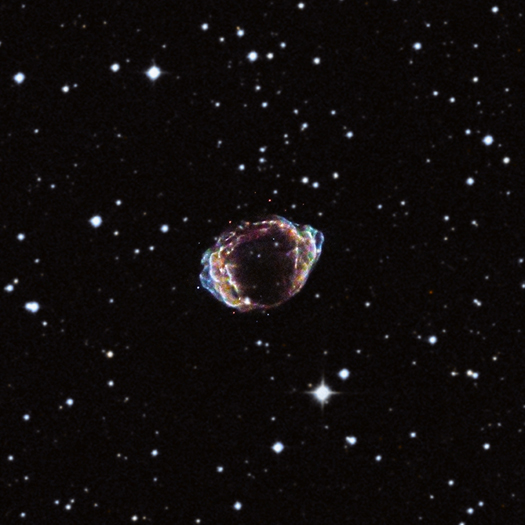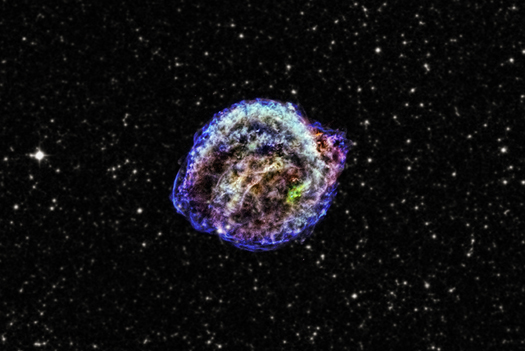Runaway Pulsar Firing an Extraordinary Jet
Submitted by chandra on Tue, 2014-02-18 10:53An extraordinary jet trailing behind a runaway pulsar is seen in this composite image that contains data from NASA's Chandra X-ray Observatory (purple), radio data from the Australia Compact Telescope Array (green), and optical data from the 2MASS survey (red, green, and blue). The pulsar - a spinning neutron star - and its tail are found in the lower right of this image (mouse over the image for a labeled version). The tail stretches for 37 light years , making it the longest jet ever seen from an object in the Milky Way galaxy, as described in our press release.

